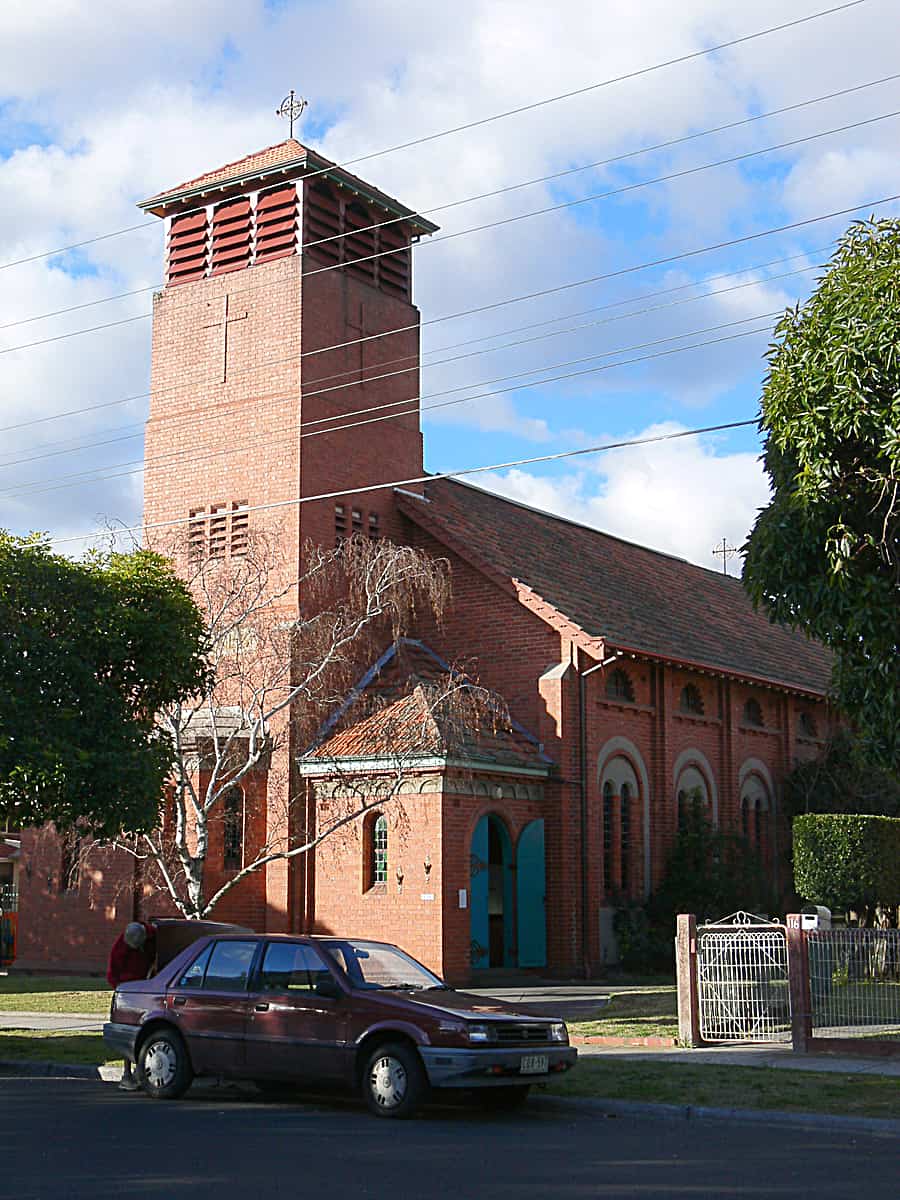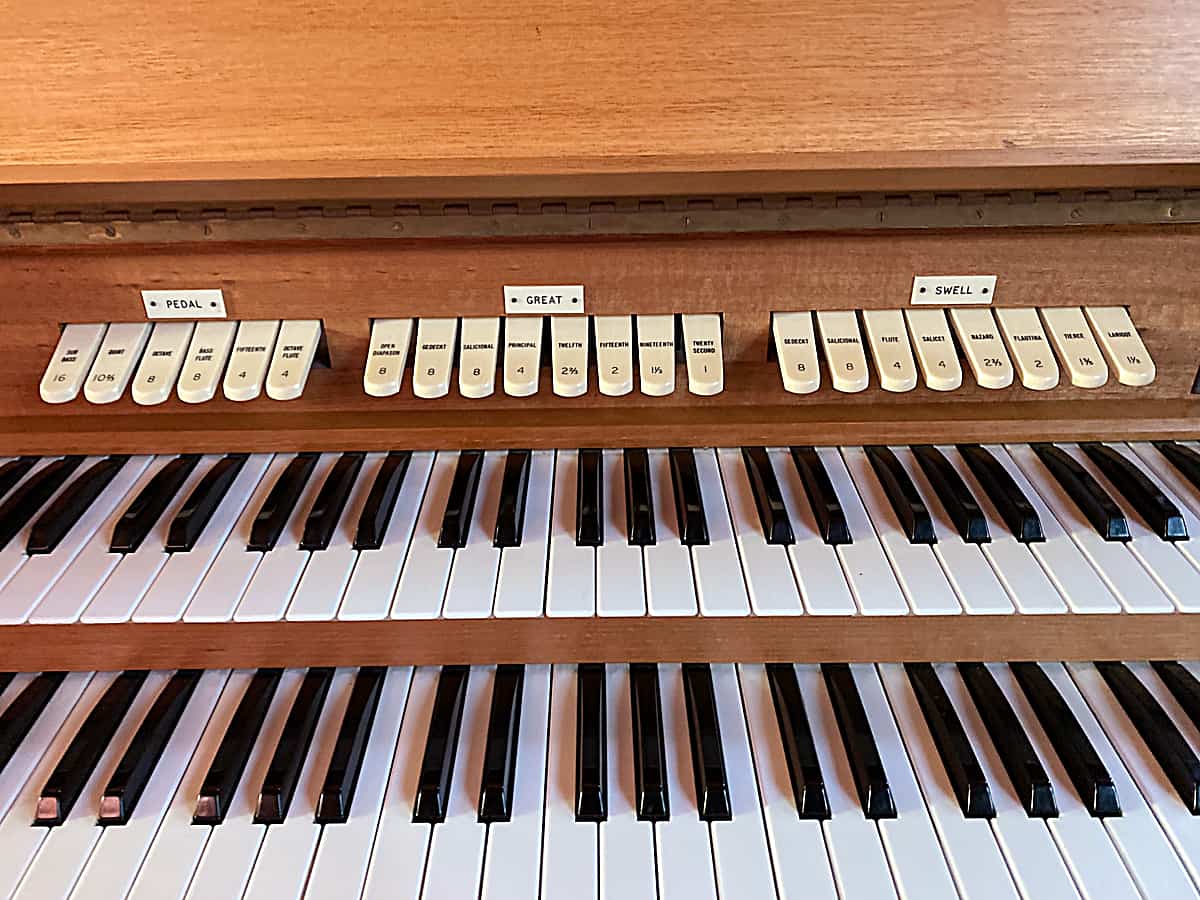
St Agnes' Anglican Church, Glen Huntly: exterior from south-west
[photograph by John Maidment (21 June 2006)]
Historical and Technical Documentation by John Maidment
© OHTA (last updated October 2023)

St Agnes' Anglican Church, Glen Huntly: exterior from south-west
[photograph by John Maidment (21 June 2006)]
Historical and Technical Documentation by John Maidment
© OHTA (last updated October 2023)
St Agnes Church had its beginnings in the year 1888. On 1 November 1924, Archbishop Lees laid the foundation stone of a new church and this was dedicated on 16 April 1925.1 The architects were Grainger, Little, Barlow & Hawkins2, a prominent firm in Melbourne at the time, who also designed the Church of Christ in Camberwell and Holy Trinity Anglican Church at Hampton.
The building was unusually designed in a Romanesque style which was more generally associated with the Catholic church at the time. Constructed in red brick, it consists of a western tower surmounted by a wooden roof, flanked by porches and an apsidal baptistery. The nave was intended to be flanked by aisles opening through an arcade but these were not built owing to cost. A brick arch led to the choir flanked by a clergy vestry and organ chamber to the left (the opening for this has since been filled in) and a choir vestry to the right. The apsidal sanctuary incorporated an opus sectile panel representing the Last Supper and the altar had six candlesticks, in accord with the Anglo-Catholic tradition of the parish. A wooden pulpit with tester stood to the left of the chancel which was screened from the nave by a wrought iron screen with gates.3
Sadly, during alterations that began in the 1960s, most of the above was sadly swept away - even the wooden pews vanished and the iron screen was placed outside, to the south of the church. However, the fine brick details survive together with the metal lanterns, green glass windows in the nave, and the elaborate timber ceiling.

St Agnes' Anglican Church, Glen Huntly: organ case, at rear of church
[photograph supplied by James Flores (2023)]
For almost 50 years, the church used a large single-manual reed organ. The present organ was built by Hill, Norman & Beard (Australia) Pty Ltd in 19724. It was initially placed on the floor of the nave, at the rear, with the console in front, but in 2001 Australian Pipe Organs Pty Ltd relocated the instrument on to a new platform placed above the west door. In order to economise on cost, Hill, Norman & Beard used some second-hand pipework. There are three ranks: Open Diapason 8 (unenclosed), Sub Bass / Gedeckt 16 (bottom octave unenclosed, remainder enclosed); Dulciana 8 (enclosed, from tenor C).
| GREAT Open Diapason Gedeckt Dulciana Principal Twelfth Fifteenth Nineteenth Twenty Second |
8 8 8 4 2-2/3 2 1-1/3 1 |
|
| SWELL Gedeckt Dulciana Flute Dulcet Nazard Flautina Tierce Larigot |
8 8 4 4 2-2/3 2 1-3/5 1-1/3 |
|
| PEDAL Sub Bass Quint Octave Bass Flute Fifteenth Octave Flute |
16 10-2/3 8 8 4 4 |
Compass: 61/30
Detached stopkey console
Balanced swell pedal
Electro-magnetic action5

St Agnes' Anglican Church, Glen Huntly: console
[photograph supplied by James Flores (2023)]

St Agnes' Anglican Church, Glen Huntly: stop keys
[photograph supplied by James Flores (2023)]
1 The Argus, 17 April 1925, p.9
2 Recorded on foundation stone
3 Author's reminiscences based upon attendance at the church 1955-58
4 No written order can be found in the firm's order books: orders number V822, V834, V838 and V839 remain unlisted, so it must have been one of these
5 Specification noted from console photographs supplied by James Flores 2023